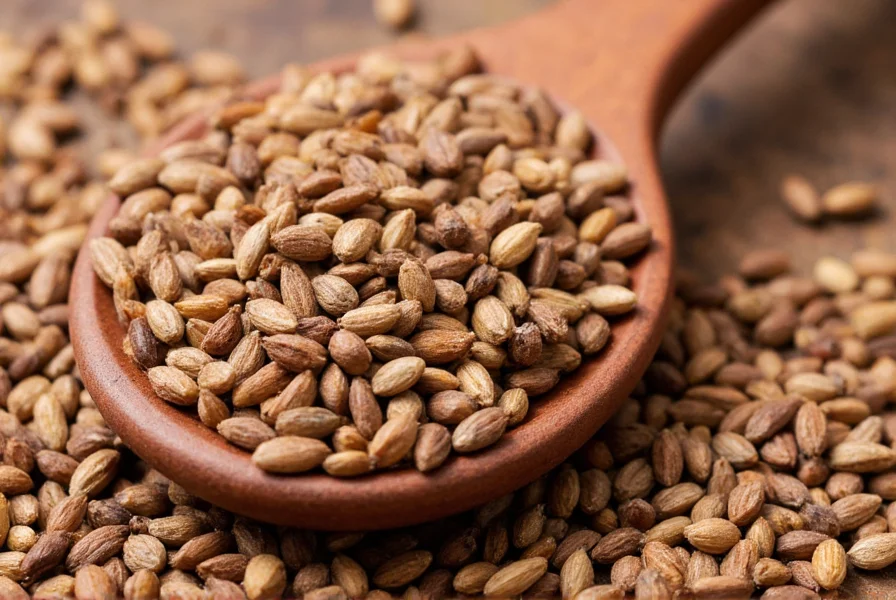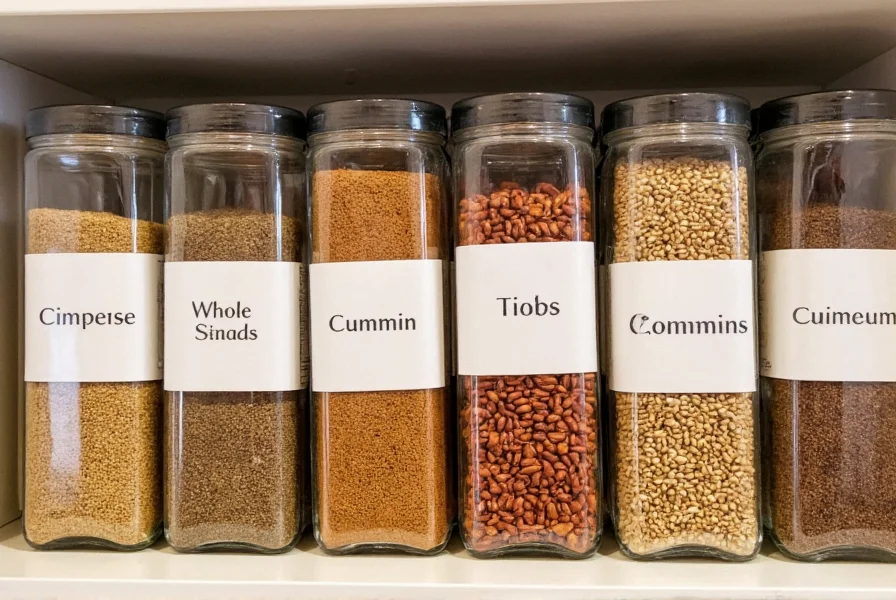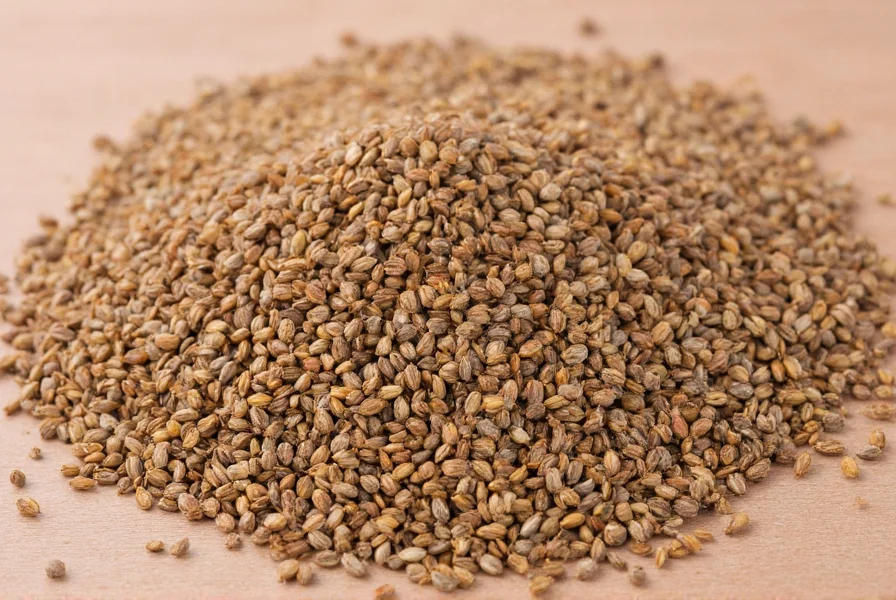These small, crescent-shaped seeds have been used for thousands of years in traditional medicine and global cuisines, particularly in Indian, Middle Eastern, and Mexican cooking. When properly stored and used, whole cumin seeds maintain their potent flavor profile and therapeutic properties significantly longer than their ground counterparts.
Nutritional Profile and Health Benefits
Whole cumin seeds pack a powerful nutritional punch in a tiny package. A single tablespoon (6g) contains approximately 22 calories, 1.4g of protein, 1.6g of fat, 1.7g of dietary fiber, and notable amounts of iron (23% of daily value), manganese (17%), and magnesium (8%). The essential oils in whole cumin seeds, particularly cuminaldehyde, contribute to their impressive health properties.
Research indicates that regularly consuming whole cumin seeds may support digestive health by stimulating enzyme secretion in the pancreas. Their antioxidant properties help combat oxidative stress, while their anti-inflammatory compounds may reduce symptoms of arthritis and other inflammatory conditions. Traditional Ayurvedic medicine has long used cumin seeds to improve respiratory function and enhance iron absorption—particularly valuable for individuals with iron deficiency.

Whole vs. Ground Cumin: Critical Differences
Understanding the distinction between whole and ground cumin is essential for maximizing flavor and nutritional value in your cooking. Whole seeds maintain their essential oils and compounds until crushed or ground, preserving freshness for months rather than weeks.
| Characteristic | Whole Cumin Seeds | Ground Cumin |
|---|---|---|
| Shelf Life | 1-2 years when properly stored | 3-6 months before significant flavor loss |
| Flavor Intensity | More complex, brighter flavor when toasted | Muted, one-dimensional flavor profile |
| Nutrient Retention | Preserves volatile oils and antioxidants | Rapid degradation of essential compounds |
| Culinary Applications | Ideal for tempering, slow cooking, pickling | Better for quick dishes, marinades, dry rubs |
Optimal Culinary Applications
Professional chefs consistently prefer whole cumin seeds for dishes requiring deep, complex flavor development. The traditional Indian technique of tadka or tempering involves heating whole cumin seeds in oil until they crackle and release their essential oils, creating a flavor foundation for curries, dals, and rice dishes.
For Mexican cuisine, lightly toasting whole cumin seeds before grinding releases their full aromatic potential in mole sauces and spice blends. In Middle Eastern cooking, whole cumin seeds enhance pickled vegetables and bread doughs, providing bursts of flavor throughout the final product.
The toasting technique matters significantly—heat a dry skillet over medium heat, add seeds, and toast for 1-2 minutes until fragrant and slightly darker, shaking frequently to prevent burning. This simple step doubles the aromatic compounds compared to using raw seeds.
Proper Storage Methods for Maximum Freshness
To maintain the volatile oils that give whole cumin seeds their distinctive flavor, proper storage is non-negotiable. Store seeds in an airtight container away from light, heat, and moisture. Glass jars with tight-sealing lids work best, kept in a cool, dark pantry.
For extended storage beyond six months, consider refrigeration in a moisture-proof container. Freezing whole cumin seeds preserves their essential oils for up to two years with minimal degradation. Never store near heat sources like stoves or in clear containers exposed to light, as this rapidly degrades flavor compounds.

Substitution Guidance When Whole Seeds Are Unavailable
If your recipe calls for whole cumin seeds but you only have ground cumin, use 1/2 teaspoon of ground cumin for every teaspoon of whole seeds required. However, this substitution loses the textural element and more complex flavor profile that whole seeds provide.
For authentic flavor when substituting, toast the ground cumin briefly in a dry pan before adding to your dish. Better alternatives include caraway seeds (use 3/4 amount) or a combination of coriander and fennel seeds, though these won't replicate cumin's distinctive earthy warmth.
Purchasing High-Quality Whole Cumin Seeds
Selecting premium whole cumin seeds ensures optimal flavor and nutritional value. Look for seeds that are uniform in size, with a rich brown color and no signs of moisture or mold. High-quality seeds should feel dry and brittle, not soft or pliable.
When possible, buy from specialty spice merchants who can verify the harvest date and storage conditions. Seeds harvested within the past year deliver significantly more flavor than older stock. Properly stored, high-quality whole cumin seeds should release a strong, warm aroma when crushed between your fingers.
Frequently Asked Questions
What's the difference between whole cumin seeds and ground cumin in cooking?
Whole cumin seeds maintain their essential oils and complex flavor profile until used, providing brighter, more nuanced flavor when toasted. Ground cumin loses volatile compounds quickly, resulting in a flatter taste. Whole seeds also offer textural elements that ground cumin cannot replicate in dishes like rice or pickles.
How long do whole cumin seeds stay fresh compared to ground cumin?
Properly stored whole cumin seeds maintain peak freshness for 1-2 years, while ground cumin begins losing flavor within weeks and becomes significantly diminished after 3-6 months. The protective seed coat preserves the essential oils in whole seeds, dramatically extending their shelf life.
Can I substitute ground cumin for whole cumin seeds in recipes?
Yes, but with adjustments. Use half the amount of ground cumin compared to whole seeds called for in the recipe. For better results, toast the ground cumin briefly in a dry pan before adding to your dish. Note that this substitution won't provide the same textural element or complex flavor development as using whole seeds.
What's the best way to toast whole cumin seeds for maximum flavor?
Heat a dry skillet over medium heat, add the seeds, and toast for 1-2 minutes while shaking frequently until fragrant and slightly darker. Proper toasting doubles the aromatic compounds. Remove immediately from heat to prevent burning, as seeds continue cooking from residual heat.











 浙公网安备
33010002000092号
浙公网安备
33010002000092号 浙B2-20120091-4
浙B2-20120091-4